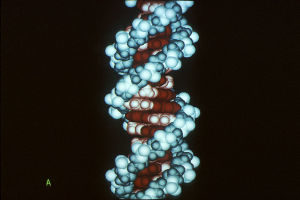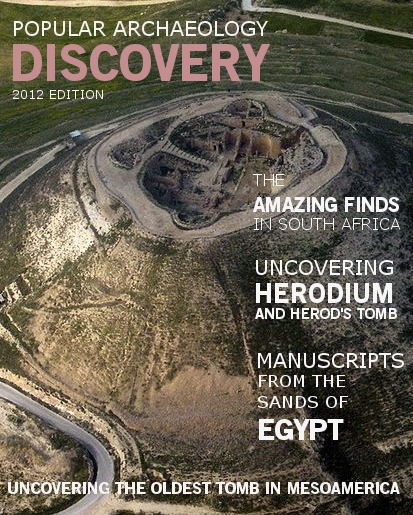
Called ‘Globetrotter’, the powerful technique has produced an interactive genetic roadmap to understanding how human population interbreeding has illucidated our ancestral connections and even uncovered human events previously undocumented in history.
Led by Dr. Garrett Hellenthal of the University College London Genetics Institute, a team of researchers has reconstructed the genetic mixing between each of 95 populations spanning Europe, Africa, Asia and South America over the last four thousand years. They did this by developing and applying a sophisticated statistical algorithmic approach to analyze the genomes (DNA) of 1,490 individuals in 95 populations around the world. The method relies on the fact that sections of DNA unique to a population “shrink” over time the farther one gets from the original breeding event; in other words, the smaller the DNA trace, the more ancient the admixture, or breeding event. With this method, Hellenthal and colleagues were able to identify as many as 100 admixture events across 160 generations over the last four millenia.
“DNA really has the power to tell stories and uncover details of humanity’s past,” said Dr Simon Myers of Oxford University’s Department of Statistics and Wellcome Trust Centre for Human Genetics, co-senior author of the study. The researchers were able to associate some of the admixture events with key historical periods and events, such as the rule of Alexander the Great. It has also shed light on ancient events and how humans were interacting during times and in places where there is currently no historical record of the interaction.
“Because our approach uses only genetic data, it provides information independent from other sources. Many of our genetic observations match historical events, and we also see evidence of previously unrecorded genetic mixing. For example, the DNA of the Tu people in modern China suggests that in around 1200 C.E., Europeans similar to modern Greeks mixed with an otherwise Chinese-like population. Plausibly, the source of this European-like DNA might be merchants travelling the nearby Silk Road.”
Throughout history, populations intermixed as groups of people migrated and empires and civilizations expanded. But until now, the actual timing of the interbreeding events that contributed to the genetic makeup of humans today has not been clear.
“What amazes me most is simply how well our technique works,” said Hellenthal. “Although individual mutations carry only weak signals about where a person is from, by adding information across the whole genome we can reconstruct these mixing events. Sometimes individuals sampled from nearby regions can have surprisingly different sources of mixing.”
“For example, we identify distinct events happening at different times among groups sampled within Pakistan, with some inheriting DNA from sub-Saharan Africa, perhaps related to the Arab Slave Trade, others from East Asia, and yet another from ancient Europe,” added Hellenthal. “Nearly all our populations show mixing events, so they are very common throughout recent history and often involve people migrating over large distances.”
“Each population has a particular genetic palette,” said Dr Daniel Falush of the Max Planck Institute for Evolutionary Anthropology in Leipzig, co-senior author of the study. “If you were to paint the genomes of people in modern-day Maya, for example, you would use a mixed palette with colours from Spanish-like, West African and Native American DNA. This mix dates back to around 1670 C.E., consistent with historical accounts describing Spanish and West African people entering the Americas around that time. Though we can’t directly sample DNA from the groups that mixed in the past, we can capture much of the DNA of these original groups as persisting, within a mixed palette of modern-day groups. This is a very exciting development.”
The detailed report is published in the 14 February 2014 issue of Science. Science is published by AAAS, the nonprofit science society.
See the interactive map for more information about specific populations.
_____________________
The research was funded by the Oxford University John Fell Fund, the National Institutes of Health (USA), the Wellcome Trust, the Biotechnology and Biological Sciences Research Council and the joint Royal Society/Wellcome Trust Sir Henry Dale Fellowship.
Edited and adapted from the University College London press release, Interactive map of human genetic history revealed.
______________________________________________________________________________________________________________________
Read about the most fascinating discoveries with a premium subscription to Popular Archaeology Magazine. Find out what Popular Archaeology Magazine is all about. AND MORE:
 On the go? Purchase the mobile version of the current issue of Popular Archaeology Magazine here for only $2.99.
On the go? Purchase the mobile version of the current issue of Popular Archaeology Magazine here for only $2.99.
And, Popular Archaeology’s annual Discovery edition is a selection of the best stories published in Popular Archaeology Magazine in past issues, with an emphasis on some of the most significant, groundbreaking, or fascinating discoveries in the fields of archaeology and paleoanthropology and related fields. At least some of the articles have been updated or revised specifically for the Discovery edition. We can confidently say that there is no other single issue of an archaeology-related magazine, paper print or online, that contains as much major feature article content as this one. The latest issue, volume 2, has just been released. Go to the Discovery edition page for more information.
Subscription Price: A very affordable $5.75 for those who are not already premium subscribers of Popular Archaeology Magazine (It is FREE for premium subscribers to Popular Archaeology). Premium subscribers should email [email protected] and request the special coupon code. Or, for the e-Book version, it can be purchased for only $3.99 at Amazon.com.





